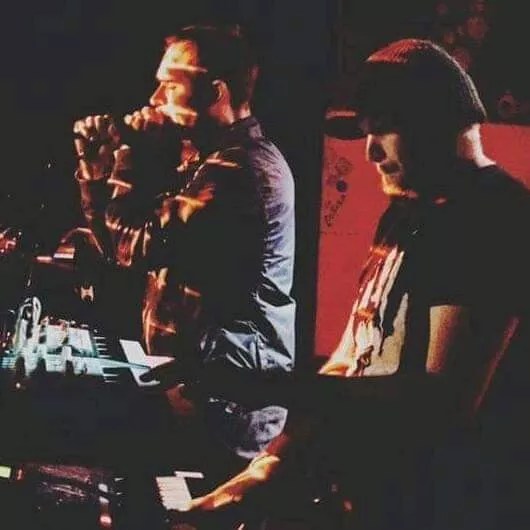
Jay Eric

Audio By Carbonatix
Daine Cox just wants to see the musical artists he loves play live. So when he discovered that many of his favorite synthwave acts were just recently breaking into touring and doing live shows, he was determined to see them perform, even if it meant finding a venue and booking the acts himself.
With lots of friends in Denver’s underground music scene, it was easy for him to find local synthwave artists through word of mouth recommendations. He immediately thought the Walnut Room would be a perfect space to host these concerts, since he used to be the bar manager there and his wife still works there.
The result of Cox’s efforts is 303 Synth City, a new monthly synthwave night at the Walnut Room. The debut show takes place August 8, with headliner TetraKroma, guest artist Jay Eric of Overmind Works, and resident DJ Bob Sync. Without the first show even happening yet, Cox has already managed to book two more full shows through October.
“It just went from people liking my idea to ‘Let’s do it,'” he says. “It happened really quickly. It happened to fall into my lap.”
So what exactly is synthwave? Imagine retro 1980s synths and experimental futurism meeting in the composition of a sci-fi thriller film soundtrack. Now imagine that every artist who falls into the broad category of synthwave has a different film in mind when creating their music, and the only thing that binds them all together is mutual use of the same instruments and tools. That complicated conglomerate of dissonant creators is the synthwave world.
“I think that synthwave is more of a scene than an actual genre,” Cox says. “It contains many different subgenres, whether it be italo-disco, synth pop, dark wave, vaporwave. But it’s all kind of based on the same feeling, the nostalgic feeling that it gives you of the ’80s.”

A peek inside the Walnut Room.
Megan Tutin
Adam Rojo of TetraKroma agrees that the ’80s serve as a jumping-off point for synthwave.
“It’s more like this isn’t what the ’80s were. This is like a coked-up ten-year-old kid on Cocoa Puffs and five pounds of sugar’s imagination of what the ’80s could have been. It’s like a dramatic reenactment of the ’80s, some archaeologist’s best guess at what ’80s culture was like based on a couple of weird video game posters. A pumped up 3-D IMAX version of the ’80s.” Think the Stranger Things soundtrack, but stranger.
TetraKroma, whose name is derived from tetrachromat, a pseudo-scientific word for someone who can see more colors than the average human being, is made up of Adam Rojo and Rémy Jambor. They started making music together in 2012, around the same time that minimal synths and analog hardware were starting to come back in style. Jambor does all the vocals, but both members compose in a collaborative process and interchange other duties while performing and recording.
With only two people and four hands to operate a number of complex analog synthesizers, some components of TetraKroma’s music have to be automated while performing. However, the overwhelming majority of their music is produced manually in real time during a performance, making them more like a traditional band than many other electronic music artists.

The Walnut Room provides an intimate venue for performers and their audiences.
Megan Tutin
“I think when some people might think of electronic music these days, they think of electronic dance music, where there’s a DJ essentially with his laptop, but we kind of eschew that format,” says Jambor. “This old format is new again, because it brings back the performance aspect that got lost just by using the space bar on a laptop or even using a little MIDI controller.”
“We have a lot of synths that don’t have presets, so you have to remember how to make the sound in real time,” adds Rojo. “Every song is from memory, and no two times are the same, which is sometimes very frustrating when it doesn’t go right. But when it goes well, it’s very rewarding. It gives that same kind of rush that you get playing something like rock music. It’s more fun to perform.”
TetraKroma doesn’t shy away from the difficulties of analog gear. In fact, the band embraces them.

TetraKroma performs live.
Chromadrift
“One thing you can say about synths in general is that there’s an upward learning curve forever, almost,” says Jambor. But it is precisely this process of constant learning and experimentation that has given analog synths a second life in music, decades after their invention. Technology in the early 1980s moved so fast that analog synths were only popular for a few years before being replaced by equipment that produced more realistic sounds and was significantly easier to operate. However, the convenience of presets came at the cost of the limitless possibilities that analog equipment afforded.
“It is the task of synthwave artists like TetraKroma to return to the heyday of analog synths and explore the potential that never had the chance to come to fruition before being eclipsed by newer technology,” he adds.
To tap into synthwave’s retro vibes, the first 303 Synth City Night will also feature a Mario Kart tournament projected on a large screen between sets.
“For the most part, the scene is probably guys from 32 to 45,” says Cox. “And it’s mostly nerdy guys, I’m not gonna lie. And a lot of them are into video games. You can’t go wrong with Mario Kart.”
303 Synth City, with Jay Eric, Bob Sync and TetraKroma, 7 p.m. Thursday, August 8, Walnut Room, 3131 Walnut Street. Tickets are $8 in advance or $13 the day of the show. Follow 303 Synth City’s upcoming shows here.